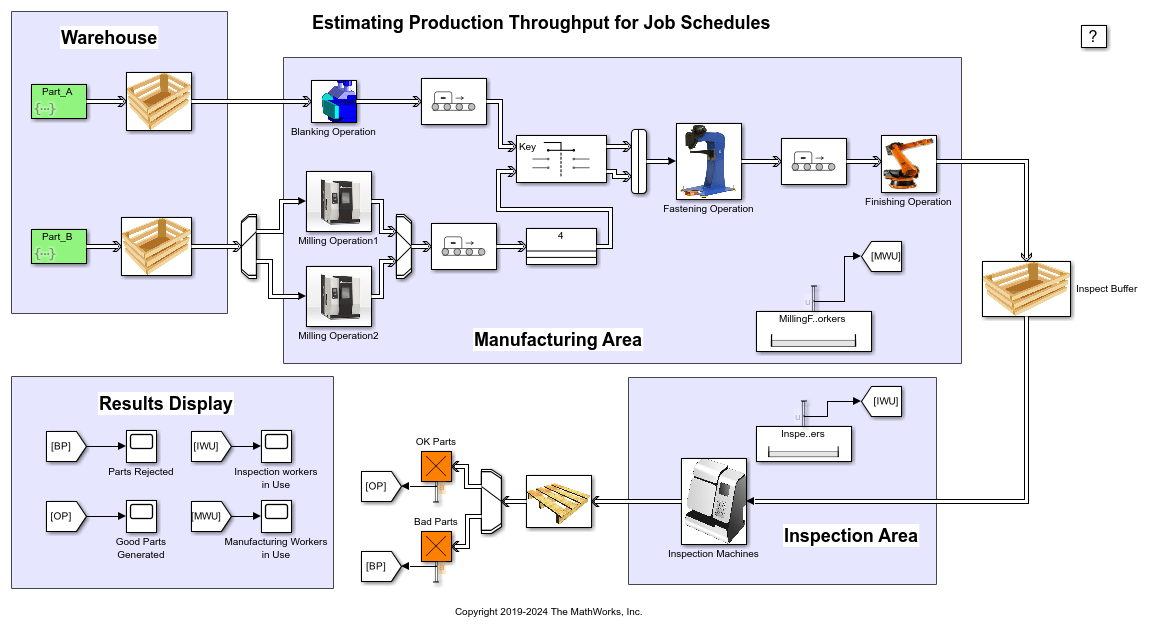Conveyor System
Transport entities
Libraries:
SimEvents
Description
The Conveyor System block transports entities across the surface of a conveyor. Entities enter the block by sliding onto the conveyor surface and they depart the block by sliding off. You can specify the speed of the conveyor. If the conveyor speed is variable, a second input port appears on the block to accept anonymous entities that carry data for specifying the new conveyor speed. Use this block to model transportation applications involving production systems, or logistical systems.
In the Conveyor System block:
You can specify the speed and the surface length of the conveyor. You can specify the length and the minimum distance between the transported entities.

Entities slide into the conveyor surface and an entity is considered as inside the conveyor surface when its front side coincides with the surface entry.

Entities slide out of the conveyor surface and an entity is considered as outside the conveyor surface when its back side coincides with the surface entry.

Conveyor speed determines the total time between an entity entry to the surface and its exit from the surface.
Entity can enter and exit the conveyor surface provided that:
There are no other entities blocking the entity when the Blocked output behavior is set to
Accumulate.The conveyor surface is not paused when the Blocked output behavior is set to
Pause. For more information, see Blocked output behavior.

For instance, suppose that the conveyor length is
10, entity length is1, and conveyor speed is5. Then, it takes2.2simulation time for the entity to depart the surface.10/5 = 2to travel through the surface and1/5 = 0.2to depart from the surface because its length is1.After an entity enters the conveyor surface, the next entity enters after the first one travels to the specified minimum distance between entities.

The capacity of the conveyor system is the maximum number of entities allowed on the surface. The capacity is determined by the total surface length, entity length, and the minimum distance between entities.
For example, suppose that the entity length is
1meter, conveyor system surface length is100meters, and the distance between entities is15meters. The capacity of the conveyor system becomes6entities.
When using the Conveyor length, Conveyor speed, Minimum distance between entities, and Entity length value parameters ensure that the values are consistent with each other.
For example, specify the entity length of 10 cm and a conveyor system of length 100 m to achieve consistency:
Set the Conveyor length parameter to
100.Set the Entity length parameter to 0.1.
Examples
Ports
Input
Output
Parameters
Version History
Introduced in R2017b

